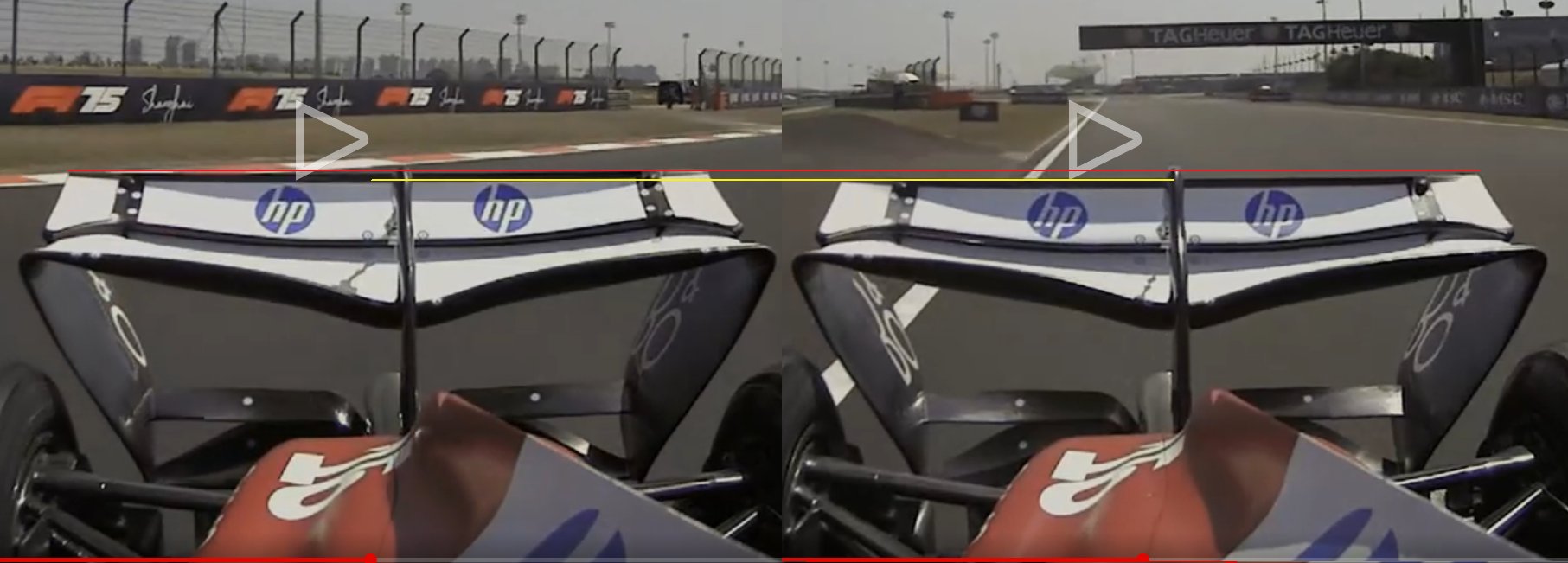Wasn’t that the cause of porpoising?
- Login or Register
No account yet? Sign up
The flexiwing is a compromise, but its an opportunity to have somewhat active aero, thats where the big advantage is. I think if teams could develop floors and wings with active aero, the wings themselves would be very rigid.hollus wrote: ↑20 Mar 2025, 16:14A little thought on flexible wings and long term development in general:
Having a wing that can have a large angle of attack at low speed and a low one at high speed comes with obvious immediate benefits. So does, say, the weight savings from not adding rigidity.
But wouldn’t this changing geometry of the front wing individual flaps and of the rear wing as a whole, and of the beam wing somewhere in between… wouldn’t this exacerbate the correlation problems that all teams have to some extent with their wind tunnels?
And while we are at it… should we be speaking of flexible floors as well? Not as in sprung or cantilevered, but just as in “as thin as possible”, so that the floor “bulges down” under its own partial vacuum?
An infinitely rigid car must be ultimately slower, but sooooo much easier to develop!
Where is the right compromise there?
Wasn't Ferrari with flexing in the floor and the TD crippled them? I suppose from that moment the floors must be pretty rigid logically.
These squads are understood to be McLaren, Ferrari, Alpine and Haas.
Haas team principal Ayao Komatsu said that while his squad would not need to make modifications to the wing, “we may have to change a little bit how we set up the wing, but not the design or anything".
This comment may offer a clue that the tricks being employed by teams are more about how the wings are configured rather than any designs themselves being outside the new restrictions.
https://www.the-race.com/formula-1/f1-f ... hinese-gp/The Race has learned that this year’s mini-DRS controversy involves a different area of the wing compared to last year – when McLaren managed to flex the main DRS flap to help open the slot gap and reduce drag.
This time around the key area of focus is the flap area outside of the DRS element. It is suspected the slot gap is being manipulated to open up slightly – and not even as much as last year’s McLaren trick that helped Oscar Piastri win the Azerbaijan Grand Prix.
The theory is that by rotating the flap to open up the slot gap in this area, it not only helps to reduce the frontal area of the wing but also helps stall the wing – delivering an immediate reduction in drag.
This benefit has been described by sources as “potentially significant”.

I'm surprised FIA went after the relatively minor slot gap deflection instead of this whole rear wing assembly flexing. It seems pretty obvious which is leading to more lap time and given they have already banned the RB16b wings for similar behavior it's a headscratcher from the FIA for sure.Vanja #66 wrote: ↑21 Mar 2025, 09:30Ferrari flexes as much as McLaren and Mercedes' bigger wing in testing. I see this as excessive and unreasonable, but the FIA is now ok with it beyond doubt. Red Bull is missing out on this, it's not a lot but it's free lap time basically
https://pbs.twimg.com/media/GmjAvxnXwAA ... name=large
There's some FIA logic to it, we're just yet to understand them...euv2 wrote: ↑21 Mar 2025, 13:54I'm surprised FIA went after the relatively minor slot gap deflection instead of this whole rear wing assembly flexing. It seems pretty obvious which is leading to more lap time and given they have already banned the RB16b wings for similar behavior it's a headscratcher from the FIA for sure.

No, it was the sensor being added to check porpoising effects that killed them. Their porpoising was quite bad obvious, but seemed manageable to the drivers and was quite soft vs what Mercedes had, where the car just smashed into the floor continuously.
They stopped policing the porpoising metric before the end of 2022 and Ferrari's good performance never rematerialisedSiLo wrote: ↑21 Mar 2025, 18:28No, it was the sensor being added to check porpoising effects that killed them. Their porpoising was quite bad obvious, but seemed manageable to the drivers and was quite soft vs what Mercedes had, where the car just smashed into the floor continuously.
That's not the point I was trying to make at all.SiLo wrote: ↑21 Mar 2025, 18:28No, it was the sensor being added to check porpoising effects that killed them. Their porpoising was quite bad obvious, but seemed manageable to the drivers and was quite soft vs what Mercedes had, where the car just smashed into the floor continuously.
